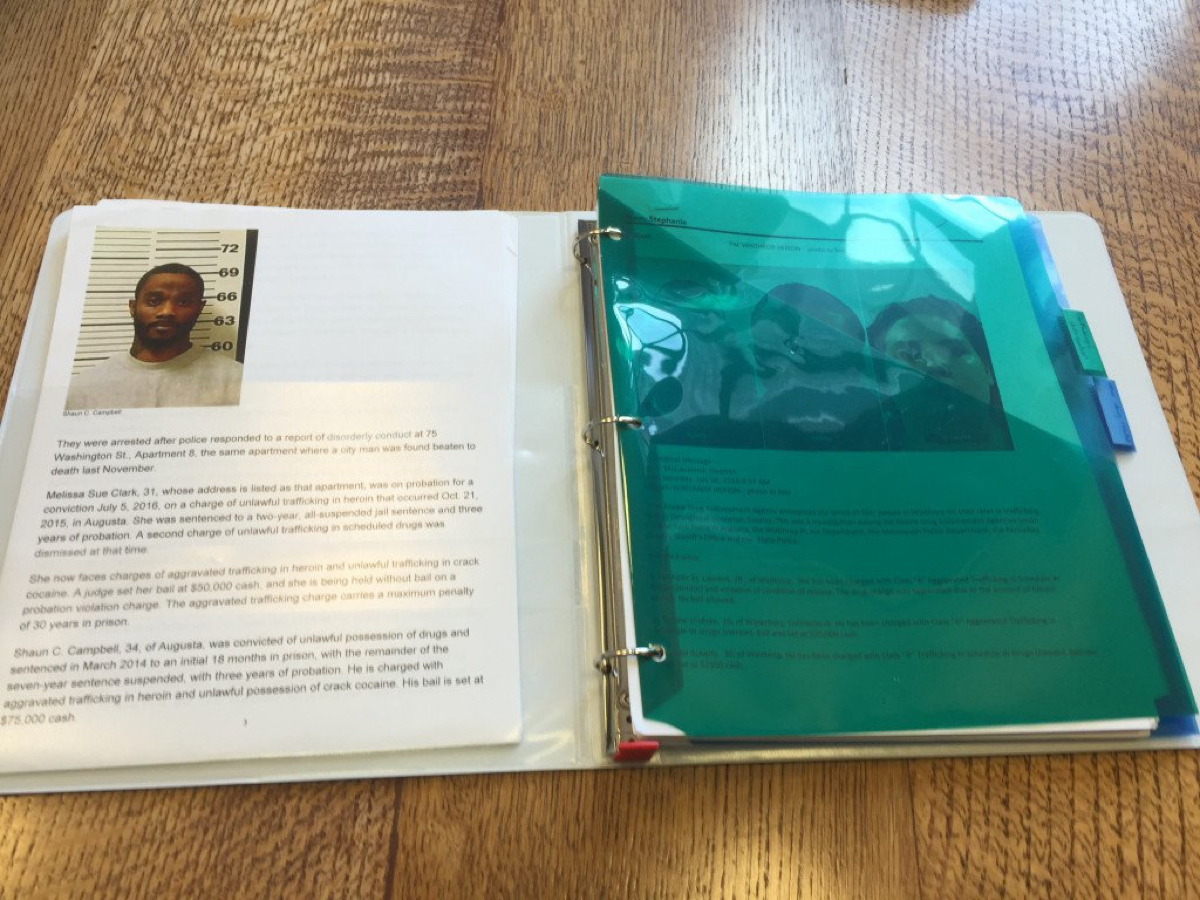Maine Gov. Paul LePage’s Three-Ring Binder on Drug Crimes Released

Photo by Scott Thistle/Portland Press Herald
Even though he has stopped talking to the press, Maine Gov. Paul LePage—the politician who made waves for blaming his state’s heroin epidemic on out-of-state minorities—is making headlines yet again today.
Facing pressure from the ACLU, the state on Monday released a copy of LePage’s infamous three-ring binder of briefings on drug crime. LePage had said that “90-plus percent” of the drug trafficking suspects in the binder were black and Hispanic, hailing from New York, Connecticut, and the Massachusetts cities Lawrence and Lowell. But alas, the binder does not reflect those claims, and does not back up his argument—made over and over again and in outrageous fashion—that people of color are driving the opioid epidemic in the whitest state in the union.
According to the Portland Press Herald’s analysis of the 148-page document, fewer than half of the suspects that appear in the binder’s smattering of news clips, police reports, and mug shots are minorities.
Of the 93 news and booking photos in the binder featuring people, 37 of them appear to be people who are either black or Hispanic, or about 40 percent of the photos in the binder, while 56, or about 60 percent, appear to be people who are white.
However, it’s difficult to discern the race of some of the suspects because the contents of the binder, released to the media on CDs, were scanned or photocopied in black and white, and the reproduction is uneven.
LePage’s claims about the binder came amid his other headline-grabbing comments about race, which drew wide attention for their harsh, unapologetic nature.
“These are guys with the name D-Money, Smoothie, Shifty, these types of guys. They come from Connecticut and New York, they come up here, they sell their heroin, and they go back home,” LePage said at a town hall meeting in January. “Incidentally, half the time they impregnate a young, white girl before they leave.”
Asked in August why it was important to focus on the race of drug criminals, he used an analogy suggesting the state of Maine is at war.
“A bad guy is a bad guy. I don’t care what color he is,” LePage said during a press conference, “When you go to war, if you know the enemy, the enemy dresses in red and you dress in blue, you shoot at red. … You shoot at the enemy. You try to define the enemy. And the enemy right now, the overwhelming majority of people coming in are people of color or people of Hispanic origin.”
Throughout the ordeal, LePage has seemed bewildered at the idea that critics would accuse him of racism. Sensing that a state senator was making that accusation about his comments on race, he lashed out, leaving a threatening, expletive-laced message in the politician’s voicemail.
But following the release of the binder, the American Civil Liberties Union of Maine made exactly that charge. Its executive director, Alison Beyea, called LePage’s statements “dangerous and racist:”
The governor greatly exaggerated the percentage of people arrested for dealing drugs who are Black or Hispanic. He then used his false claims as the basis for calling people of color the enemy. Whether or not his assertions were deliberately misleading, they were dangerous and racist.
The governor has multiple agencies at his disposal that collect arrest data in Maine. It is outrageous that he would rely on an incomplete collection of newspaper clippings and emails to make false, inaccurate accusations about people of color. It’s time for the governor to stop using people of color as a scapegoat for Maine’s drug problem, and to start proposing real solutions based on actual facts.
Read through the full document here.

